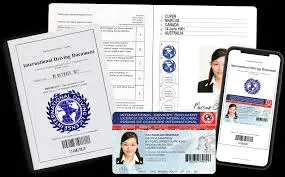Driving in Canada with a Foreign License, Canada is known for its stunning landscapes, vibrant cities, and welcoming culture, making it a popular destination for tourists and expatriates alike. If you’re planning to drive in Canada using a foreign license, it’s essential to understand the rules and regulations that govern this practice. This blog post will guide you through everything you need to know about driving in Canada with a foreign license, including legal requirements, tips, and best practices.
1. Can You Drive in Canada with a Foreign License?
Yes, you can generally drive in Canada with a foreign license, but there are specific conditions and regulations that vary by province or territory. Most provinces allow visitors to use their valid foreign driving licenses for a limited time, typically ranging from a few months to up to a year, depending on local laws. However, it’s important to check the specific rules for the province or territory you plan to visit.
Temporary Visitors
If you are visiting Canada as a tourist or for a short-term stay, you can usually use your foreign driving license as long as it is valid and written in English or French. If your license is not in either of these languages, you may need to obtain an International Driving Permit (IDP) before arriving in Canada. An IDP translates your foreign license into several languages and is recognized internationally.
2. International Driving Permit (IDP)
While not required for all foreign visitors, obtaining an IDP can be beneficial. Here are a few key points about the IDP:
- What is it? The IDP is a document that translates your driving credentials into multiple languages, making it easier for authorities to verify your eligibility to drive.
- How to Get One: You can apply for an IDP through automobile associations or other designated organizations in your home country. The application process usually requires a valid driver’s license, a passport-sized photo, and a small fee.
- Validity: The IDP is typically valid for one year and should always be carried alongside your foreign license when driving in Canada.
3. Understanding Provincial Regulations
Each province and territory in Canada has its own rules regarding foreign drivers. Here are a few examples:
- Ontario: Foreign drivers can use their valid foreign license for up to 90 days. After that, they may need to obtain an Ontario driver’s license if they become a resident.
- British Columbia: Visitors can drive with their foreign license for up to six months. An IDP is recommended if the license is not in English.
- Alberta: Foreign drivers can use their license for up to 12 months. An IDP is suggested but not mandatory.
Always check the specific regulations of the province or territory you plan to visit to ensure compliance.
4. Insurance Requirements
Before driving in Canada, ensure you have valid car insurance coverage. If you’re renting a vehicle, check with the rental company about their insurance policies. Here are a few tips:
- Rental Insurance: Most car rental companies offer insurance options that you can purchase at the time of rental.
- Home Insurance Coverage: Some personal auto insurance policies may cover you while driving a rental vehicle, so check with your insurer before traveling.
- Mandatory Insurance: All vehicles in Canada must have at least a minimum level of liability insurance. Ensure you are covered to avoid legal issues.
5. Road Rules and Driving Etiquette
Familiarize yourself with Canadian road rules and driving etiquette to ensure a safe and enjoyable driving experience:
- Speed Limits: Speed limits are posted in kilometers per hour (km/h). Pay attention to signs, as limits may vary based on the area (urban, rural, residential).
- Drinking and Driving: Canada has strict laws regarding drinking and driving. The legal blood alcohol limit is typically 0.08%, but many provinces have lower limits, especially for novice drivers.
- Seat Belts: Wearing seat belts is mandatory for all passengers in the vehicle.
- Roundabouts and Intersections: Familiarize yourself with the rules for navigating roundabouts and intersections, as they may differ from those in your home country.
6. What to Do If You’re Stopped by Law Enforcement
If you are stopped by law enforcement while driving in Canada:
- Stay Calm: Pull over safely and remain calm.
- Provide Documentation: Be prepared to present your foreign driving license, IDP (if applicable), and vehicle insurance.
- Follow Instructions: Follow any instructions given by the officer and be respectful.
Conclusion
Driving in Canada with a foreign license can be a convenient way to explore the country’s breathtaking landscapes and vibrant cities. By understanding the legal requirements, obtaining necessary permits, and familiarizing yourself with local driving laws, you can ensure a smooth and enjoyable driving experience. Always prioritize safety, and don’t hesitate to ask local authorities or rental companies if you have questions or need assistance. With the right preparation, you’ll be well on your way to enjoying the freedom of the open road in Canada!
you might also like these:
